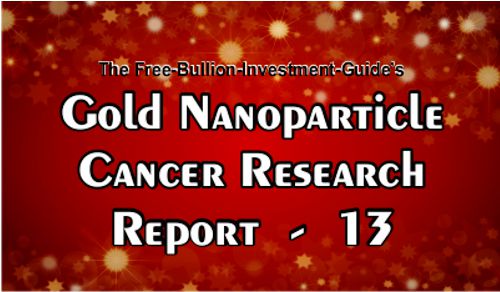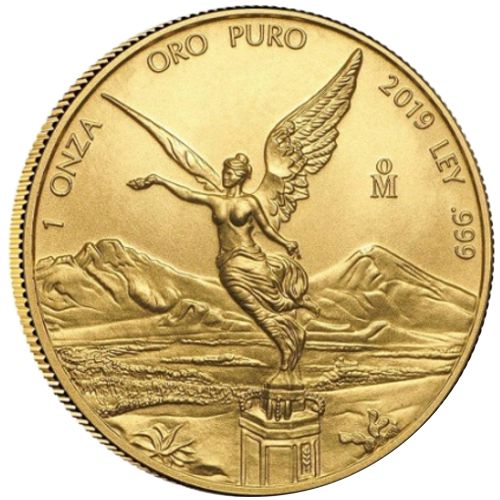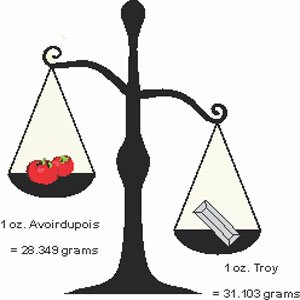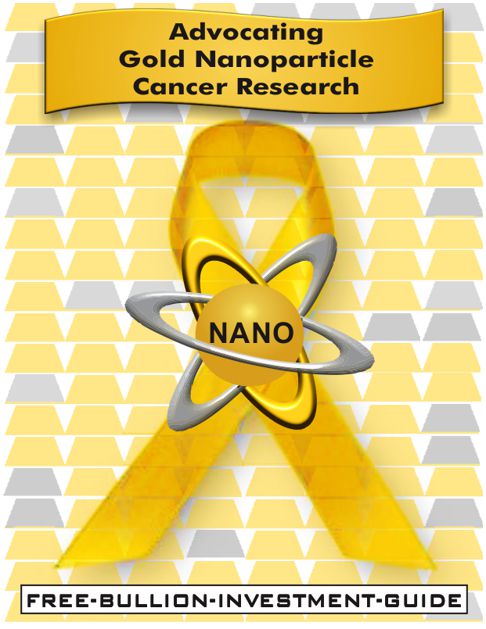Homepage / Cancer INFO: AuNP Cancer Research
Last Updated on 03/28/2025
Understanding Gold Nanoparticle
Cancer Research
Gold Nanoparticle Cancer Research is a non-invasive cancer treatment that kills cancer without harmful side-effects.
When we reflect on the conventional approaches to cancer treatment today, the terms "chemotherapy" and "radiation therapies" frequently come to mind. These time-honored methods have long been the cornerstone of cancer care.
What else comes to mind when we think of today's traditional methods of treating cancer? Answer: discomfort, pain, and mortality... This shouldn't be the case.
Taking a certain medicine or medical treatment should heal the patient, not make them question their mortality. Baldness is not caused by cancer itself; rather, it results from the toxins in cancer treatments. We need to move away from 20th-century methods of treating cancer and embrace the more advanced approaches to treat cancer that are available in the 21st century.
Gold nanoparticles are inert, and research studies have demonstrated that they can be engineered to specifically target and destroy cancer cells, ensuring there are no life-threatening side effects associated with this approach.
Gold Nanoparticle Cancer Research has repeatedly shown, in study after study, that it should be one of the 21st century's better ways of treating cancer.
If treating cancer with gold nanoparticles sounds too good to be true; read on, and you’ll discover that it’s not.
This Guide Advocates for "Better Ways to Treat Cancer," and we believe Gold Nanoparticle Cancer Research is one of the best.
Several Research Facilities and Universities in the United States and around the world have been and are conducting cancer studies using Gold Nanoparticles.
Some of the Universities and Research Facilities include:
- Rice
University in Texas
- Georgia Institute of Technology (Georgia Tech)
- the University of Missouri
- Stanford University
- the University of Delaware
- the University of Victoria, Canada,
- the University of Queensland, Australia
- the Indian Institute of Technology, New Delhi, India
- Xiamen University, China
- the National Center for Nano-science and Technology, Beijing, China.
Note:
Some of these abbreviations will be used on this page.
AuNPs = Gold Nano Particles
nm = NanoMeter
What are
Gold Nanoparticles (AuNPs)
Colloidal Gold
Gold Nanoparticles, also known as Colloidal gold, are sub-micrometer-sized nanoparticles of gold suspended in a fluid, usually water.
The photo at the right (provided by Wikimedia) is an example of how the size of the gold nanoparticles determines the color of the colloidal gold.
Colloidal gold has been used since before the birth of Jesus Christ (BC), when glass makers used colloidal gold to make Ruby Red Glass.
Colloidal gold is utilized in the production of stained glass due to its ability to produce vibrant colors through its interaction with visible light.
Modern scientific experimentation with colloidal gold didn't start until the mid-1800s.
In 1847, Michael Faraday discovered that the optical properties of gold colloids differed from those of the bulk metal, marking the first reported observation of quantum size effects and potentially the birth of nanoscience.
Faraday discovered that the color of colloidal gold is a result of the light scattering by the small size of gold particles.
This visual reaction between gold nanoparticles and light is called the Faraday-Tyndall effect.
How Small are Gold Nanoparticles?
Gold Nanoparticles range in size from 1 nanometer (nm) to several hundred nanometers; by comparison, atoms range in size from 0.1 to 0.5 nm.
The size of a normal red blood cell is about 6 to 8 micrometers (6 - 8 μm = micrometer/micron).
One micrometer is equal to one millionth of a meter, whereas one nanometer is one billionth of a meter. (A meter is equal to 3.28 feet, or a little longer than a yard)
The graphic below offers a realistic interpretation of the comparative size differences between a Red Blood Cell and a Gold Nanoparticle.
Gold Nanoparticle Shapes
Gold nanoparticles come in various shapes, such as spheres, rods, stars, triangles, and nano-triangles, also known as nano-pyramids.
Gold Nano-Rods, Stars, and Triangles behave similarly to the gold nanospheres; their shapes optimize the scattering of light.
In addition, research has shown that Gold Nano-Rods enter a tumor more readily than spheres.
Researchers are consistently testing the use of different shapes and sizes of gold nanoparticles to determine what works best for killing cancer cells.
What Makes Gold Nanoparticles (AuNPs)
Good for Fighting Cancer?
AuNPs have a Large Surface Area
Gold nanoparticles have a large surface area relative to their size, which is one of their advantages over other nanoparticles.
This amazing attribute of nanogold allows researchers to attach more cancer-fighting molecules, antibodies, or drugs to each nanoparticle.
The following is from a Stanford University article that included information about the surface area of gold nanoparticles.
|
"Gold Nanoparticles have a tremendous amount of surface area as compared with larger particles." "A cube of gold with sides 1 centimeter long has a total surface area of 6 square centimeters." "But the same volume filled with gold nano-spheres with diameters of 1 nano-meter has a surface area greater than half a football field." Source: Small wonder: How nanotechnology could detect and treat cancer - Stanford Medicine |

Gold Nanoparticles &
the EPR Effect
The EPR Effect, or Enhanced Permeability and Retention Effect, allows small molecules to accumulate more in tumor tissue than in normal tissues.
Gold Nanoparticles have the EPR Effect; they act as mini magnets, targeting and accumulating in cancer cells without external assistance.
Furthermore, with Gold Nanoparticle's large surface area, researchers use them to bind molecules to fight and find cancer to enhance their cancer-targeting properties.
Gold Nanoparticles &
Surface Plasmon Resonance
Gold Nanoparticles also exhibit a unique Physicochemical property called "Surface Plasmon Resonance."
Surface Plasmon Resonance, or SPR, happens when focused light hits Gold Nanoparticles, causing the electrons in gold to resonate and heat up.
When gold nanoparticles collect inside cancer cells, researchers heat them using focused light or lasers; the heated gold nanoparticles kill the cancer cells without harming the healthy tissues surrounding the tumor.
Gold Nanoparticles
Restrict Cancer Metastasis
According to two studies, gold nanoparticles have demonstrated to prevent cancer cells from metastasizing.
Metastasis is the process by which cancer multiplies and spreads to other tissues in the body.
In this process, cancer cells produce a thin, flat outer membrane called lamellipodia that has several tentacles called filopodia.
Lamellipodia and filopodia enable cancer cells to move to other tissues, which helps cancer cells to metastasize and spread to other areas of the body.
1st Study of Gold Nanoparticles ability to Halt Cancer from Metastasizing
The first study comes from the Georgia Institute of Technology (Georgia Tech).
In this study, researchers coated gold nanoparticles (AuNPs) with an antibody that sought out a protein that cancer cells use to produce lamellipodia and filopodia.
Once the AuNPs attached to the cancer cells, they blocked the protein's functions, reducing the growth of lamellipodia and filopodia, which slowed the migration of the cancer cells.
After the gold nanoparticles had accumulated on the exterior of the cancer cell, the researchers used a low-energy laser to heat the AuNPs, causing the lamellipodia and filopodia to melt and become mangled, thereby stopping the cancer cell from metastasizing.
Read more about the study here: Thwarting metastasis by breaking cancer's legs with gold rods - MedicalXpress2nd Study of Gold Nanoparticles ability to Halt Cancer from Metastasizing
The second study is from the Department of General Surgery at the First Affiliated Hospital of Jinan University in Guangdong, China.
In this study, the researchers determined that cancer cells promote a cellular process called 'epithelial-mesenchymal transition' (EMT).
'EMT' is a process in which epithelial cells lose their polarity and gain increased motility, which is associated with metastasis and invasion of cancer cells.
The data demonstrated that Gold Nanoparticles (AuNPs) could induce tumor vasculature normalization and reverse EMT, resulting in decreased melanoma tumor metastasis.
'Click' this link to see: an image of how well Gold Nanoparticles (AuNPs) reduced cancer cells from metastasizing on a mouse lungSee the full study here: Gold nanoparticles attenuate metastasis by tumor vasculature normalization and epithelial–mesenchymal transition inhibition - NCBI
How Do Gold Nanoparticles
Target Cancer Cells?
Researchers increase Gold Nanoparticles' Enhanced Permeability and Retention Effect (EPR Effect) by adding antibodies that contain biomarkers that help them seek out cancer cells; once the anti-bodies find the cancerous cells in the body, they attach themselves to the tumor.
Forms of AuNP Cancer Research & Researchers
Currently, there are several different methods used to kill cancer cells using Gold Nanoparticles.
Below, you'll find information about three of the most common methods researchers use to kill cancer cells with gold nanoparticles.
Further down the page, are three notable gold nanoparticle cancer researchers in the United States and China.
Gold Nanoparticles
Infrared Light & Lasers
Lasers and infrared light are some of the most common methods researchers use to kill cancer cells with gold nanoparticles.
In this research, a test subject, usually a mouse with cancer, gets injected with gold nanoparticles treated with antibodies to seek out the cancer cells.
Once the gold nanoparticles reach the cancerous cells, a laser or infrared light is pointed in the direction of the cancer cells filled with gold nanoparticles.
Through Surface Plasmon Resonance, the light heats the gold nanoparticles, killing cancer cells and destroying the tumor while leaving the healthy tissue unscathed.
The following videos describe how the research is done.
AuNPs & Drugs
Another method of research using gold nanoparticles is to attach or infuse them with a cancer-fighting drug.
Researchers attach antibodies to AuNPs with a DNA shell that opens upon entering the cancerous target, delivering the drug.
Research on chemotherapy drugs attached to gold nanoparticles has demonstrated that these drugs effectively kill tumors with less of the harmful effects typically associated with chemotherapy.
AuNPs & Radiotherapy

Another commonly used method of research that kills cancer cells using gold nanoparticles incorporates radio waves; this research is known as radiotherapy.
Radiotherapy AuNP cancer research involves injecting gold nanoparticles with cancer-targeting antibodies into a test subject; once the gold nanoparticles have accumulated within the malignancy, the test subject is exposed to a radiofrequency.
Research has demonstrated that this technique, which makes use of gold nanoparticles' surface plasmon resonance capabilities, kills cancer cells while sparing healthy tissues.
Gold Nanoparticles
Cancer Researchers
Notable Gold Nanoparticle Cancer Researchers
in the United States and China.
Dr. Naomi J. Halas
|
Dr. Naomi J. Halas is the Stanley C. Moore Professor in Electrical and Computer Engineering, Professor of Biomedical Engineering, Professor of Chemistry, Professor of Physics and Astronomy, and she's the founding director of the Laboratory for Nanophotonics at Rice University. She is the Director of the Smalley-Curl Institute. In the 1990's, Dr. Halas invented gold nanoshells at Rice University, and she has spent the last two decades researching their anticancer potential. See Dr. Halas's Rice University Faculty page here. |
|
In the early 2000s, Dr. Naomi Halas and Dr. Jennifer West co-founded a Houston-based startup, Nanospectra Biosciences.
Halas and West's early studies in cell cultures and mice demonstrated that their cancer treatment effectively destroys cancer without the harmful side effects of chemotherapy, invasive surgery, and radiation.
“The science hasn’t changed,” West said. “If you look back to our original PNAS paper, where we did the first animal studies, there’s nothing fundamentally different in the science.”
8/26/2023: Quest for New Cancer Treatment Crosses Milestone - Duke Pratt School of Engineering
Dr. Ning Fang

When I first emailed Dr. Ning Fang in 2019, he was the Associate Professor of the Chemistry Department at Georgia State University.
At Georgia State University, Dr. Fang invented a new optical imaging tool that tracks and targets cancer cells, the invention is called 'SPORT' which is short for 'Single Particle Orientation and Rotational Tracking.
Since 2021, Dr. Ning Fang has been a professor at the College of Chemistry and Chemical Engineering at Xiamen University in Xiamen, China, continuing his work.
In addition, in December of 2017, 'the Signal' a Georgia Institute of Technology (Georgia Tech) student paper, released this article about Dr. Fang's work: On the Road to Ending Cancer - The SignalIn the article from 'the Signal' Dr. Fang stated the following:
"Most cancer therapy treatments often kill both cancer cells and healthy cells. However, 'SPORT' only kills the main target, which is the cancer cell, and leaves the healthy cells unaffected. The use of gold nanoparticles is ultimately safer for cancer patients." Dr. Ning Fang
See Dr. Ning Fang Lab's website here.
Dr. Emily Day

Dr. Emily Day is an assistant professor of biomedical engineering at the University of Delaware and the Principal Investigator of the 'Day Group.'
The Day Group is a team of researchers that investigates the many areas of how nano-therapeutics can make medical treatments better; these areas include Gene Regulation, Photothermal Therapy, and Biomimetic Carriers - Drug Delivery.
A few articles about the Day Group's research:
Shining A Light on Gene Regulation
New Weapon Against Breast Cancer
Gold Nanoparticles &
The Possibilities...
The possibilities are unlimited, although there are still hurdles that this research needs to overcome, nevertheless, gold nanoparticle cancer research is showing great results.
We need to get out of the 20th-century ways of treating cancer and start using 21st-century breakthroughs to beat cancer.
There is a 'better way' to treat cancer.
Gold NanoParticle Cancer Research
|
Click Here to See all the
Gold Nanoparticle Cancer Research Blog-Posts
Other pages, on this Guide, that you
may like...
|
|
|
For Bullion Market News...
|
Support this Guide & Paypal Thank You for Your Support |
|
|
 | |||||
Free Bullion Investment Guide
Keep this Guide Online
& Paypal
Thank You for
Your Support
Search the Guide
| search engine by freefind | advanced |

Daily
Newsletter
Mintages
for
2024
Gold & Silver Mexican Libertad
|
Gold Libertads |
Chinese Gold Coin Group Co.
& Chinese Bullion
2025
Gold & Silver Chinese Panda
|
Silver Panda |
Help Us Expand our Audience by forwarding our link
www.free-bullion-investment-guide.com.
Thank You!
March's

All Articles were Originally Posted on the Homepage










































































